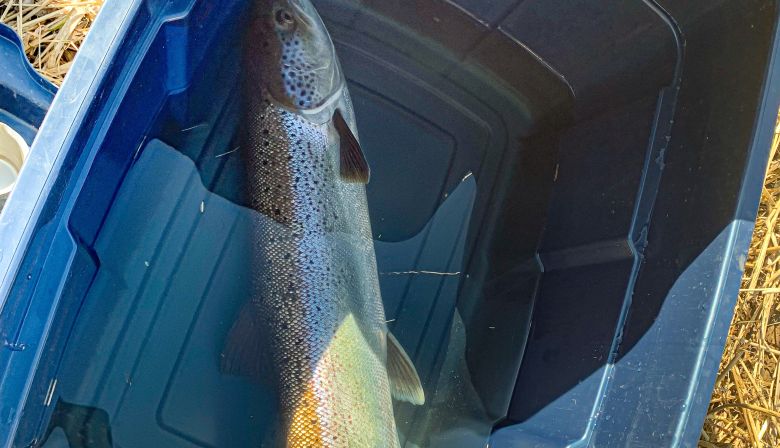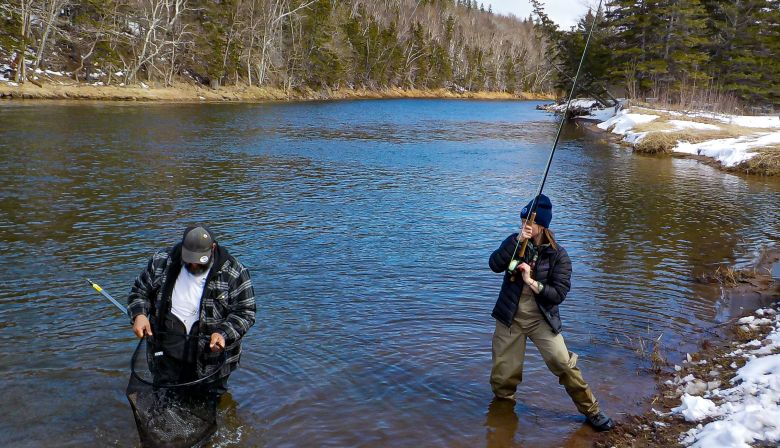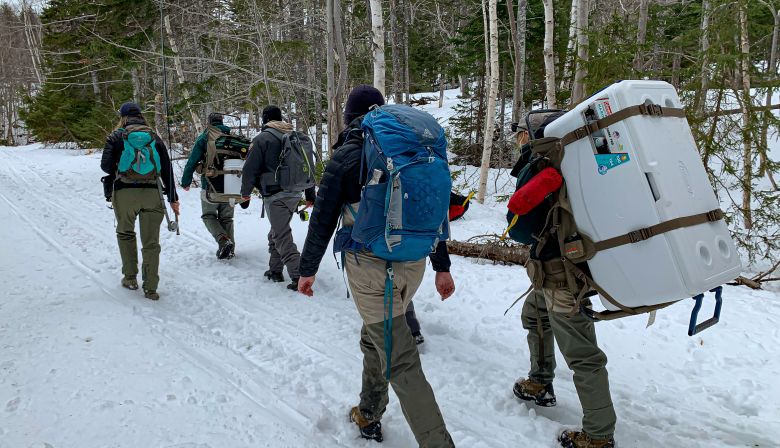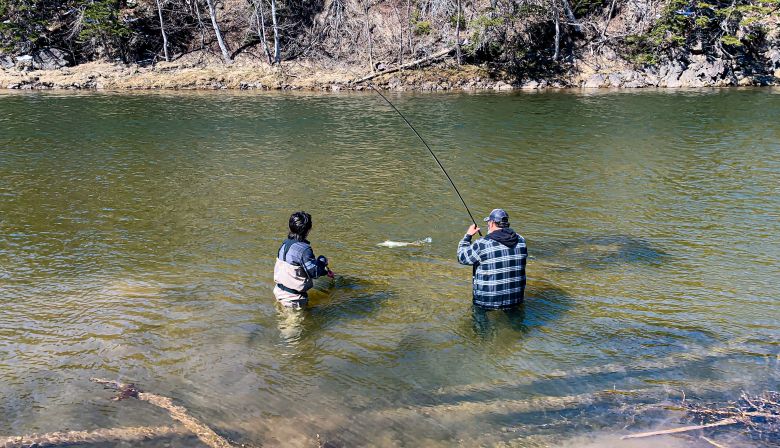
Subscribe & stay up-to-date with ASF

In early March the call came through: they were catching kelt on the Margaree. By the following week everything was in place to start tagging. Suddenly temperatures dropped, sending the fish back into hiding and us into standby mode for the next two weeks.
On Sunday April 3rd I set out from St. Andrews for Cape Breton—just in time for another 25cm dump on the island. I made myself useful by dropping satellite tags off on the St Mary’s River, which had been spared the heavy snowfall, for a crew who had started acoustic tagging that weekend.

As soon as the snow let up Tuesday, a crew from Fisheries and Oceans Canada, ASF, Parks Canada and the Margaree Salmon Association met at the library in Margaree Forks. We hauled our gear across a snow-blanketed field to the riverbank. Three brave anglers waded through the 1°C river all afternoon, bringing us two females that were tagged with acoustic transmitters.
By Wednesday plenty of the weekend’s snow had melted, the sun was out, and the river was clear and dropping. We tried the same spot with no luck, then made our way downriver hitting two more sites. As the day went on with no takes, there was concern that we’d missed the run.
The locals explained that this year the run had started exceptionally early. Normally, winter water levels are low and some kelt stick around the river into May. However, extensive November flooding had washed out roads and bridges, and likely many salmon, and there had already been four high water events as the temperature jumped erratically between positive and negative values. Anglers who assisted with DFO’s mark-recapture study on the river were catching fish in February and had seen several good fishing days before we arrived.
On Thursday, optimism returned. At a pool upriver we caught and tagged four more fish. The forecast was calling for rain over the weekend that would elevate water levels and turbidity, so we planned to reconvene on Monday.


On Monday April 11th we returned to a very different Margaree River. The snow had disappeared, and the river had climbed about a foot. It looked more like chocolate milk than water. We were joined by DFO’s Martha Robertson and Chantelle Burke who have coordinated the Environmental Studies Research Fund (ESRF) tagging project across the North American range of Atlantic salmon. We were their last stop on their Nova Scotia tagging tour. A few extra hands allowed the crew to split into groups to cover more river.

By Tuesday the sediment had settled and the river had dropped 15 centimetres. The fishing was slow, but the sun was out and birds were chirping, which encouraged us to keep casting. We were rewarded with three fish in the afternoon. The next two days flew by as we rotated a steady stream of fish through the live box, anesthetic bath, surgery board, and live box again, before releasing them back to the river when they had fully recovered. In the end we sent out 22 of the 30 acoustic tags, and 6 of those fish were also fitted with PSATs (satellite tags), which ‘pop off’ after several months, sending a wealth of information to researchers.
The recreational season on the Margaree opened Easter weekend, and we’ll monitor catch reports to determine when to return to deploy our eight remaining acoustic tags.